At the end of the 20th and beginning of the 21st centuries, we began to see a growing tiny-house movement. The causes were many, including stagnant wages, inflated real estate markets, housing the unhoused, or an embracing a more simplistic lifestyle. What is clear is that the issues being tackled aren’t new and, regarding the proposed solutions, the past serves as a prologue yet again. While the historical record clearly shows that homelessness and skyrocketing real estate prices have plagued the Denver area since 1859, when the first shacks were erected in the town of Auraria, we only recently stumbled upon an interesting strategy that was employed to overcome early barriers to home ownership in Colorado and in other regions of the country: the tent house.
The first mention we came across was in a section from the 1884 Rocky Mountain News covering the town of Elizabeth.
“Ole Olsen shingled his tent house that was wrecked by a recent hail storm. He is now looking for a Scandinavian girl to share his promising fortunes.” Rocky Mountain News July 24, 1884
This led to a number of questions regarding whether it was a tent or a house and, if more tent than house, how does one shingle the roof? The mystery only grew as we saw an 1896 real estate listing for a two room tent house at 600 W. 12th Avenue in Denver. By the early 1900s, there were more and more ads for tent houses with windows and double walls, and even fully furnished tent homes. Some at the turn-of-the-century came on double lots and had access to electricity and city water, and could be purchased for $250 (payable in $10 monthly installments). For context, a five room frame house in Berkeley on two lots would run $700. These tent homes were clearly an attempt to make housing and property ownership more accessible to a broader slice of the community.
Unfortunately, none of these ads had pictures of a tent house, let alone those advertised as having a cellar, electricity, sewer, and a shingled roof. Luckily, a colleague recalled some catalogs from the Colorado Tent and Awning Company as well as the Denver Tent and Awning Company. We pulled the 1923 edition of the former and were finally able to see the tent house in all its glory. It certainly appears to be somewhat more house than tent, including wainscotting making up a low frame around the perimeter and fixed vents in the roof. It still doesn't appear to be something one would want to spend a Colorado winter in, but an article in the November 3, 1904 Rocky Mountain News states,
“Tent life is coming more and more into favor all over the country during the summer, but in Southern California and Colorado, it has become the fashion right through the year.”
Part of the reason it was more the “fashion” in this state was tuberculosis. Many settled from around the country to take in the dry air and ease the symptoms of the disease. As such, local sanitoriums tended to erect tent cities on their grounds so patients could benefit from the fresh air day and night. Many were simply elaborate canvas tents and others were more formal tent houses. By the teens and twenties, it was common for middle class families to establish tent homes in camps in the mountains to use as summer getaways. In 1920, the state of Colorado was even planning to place tent houses along the Peak to Peak Highway between Longs Peak and Pikes Peak in order to provide travelers with reasonable accommodations. Even the federal government began advertising 30-year leases of homesites in the national forests for $10.00 per year, upon which you could build a cottage, cabin, or tent house.
In the 1930s, far fewer sales ads and building permits were appearing in the newspapers, though some homeowners were still offering to rent tent houses on their properties in town or in the mountains. The end of the tent house boom may have been due to the Depression (at least in part). However, the structures were still being used as large scale emergency structures, as was the case in California following the issuance of earthquake-proof building codes in 1934. Many schools were closed due to poor standards, so Los Angeles erected 3,500 tent house classrooms for 140,000 children. Similar projects went up all throughout California around this time.
Though the Depression may have been the cause of the drop in interest in and construction of urban tent homes, there was no clear reason as to why. While there were some horrific stories of families dying when the small structures caught fire, there never appeared to be a fire code campaign against the tent house in Colorado. That said,an op-ed by a Barnum resident in the Denver Post may shed some light on why those struggling to buy a home no longer needed a low-cost canvas alternative.
“When I began living in Barnum many years ago I lived in a one-room tent house, but now I have a new five-room home financed by the FHA. This district has forty-five new homes and sidewalks also.” Denver Post June 7, 1942
The Federal Housing Administration loans were part of the 1934 Better Housing Program which got millions of struggling families into their first homes. Many minorities were denied these loans due to the overtly racist redlining system, but the existence of such programs may help explain why so many canvas starter homes evaporated from the Denver landscape. If any long-term Denver residents have pictures of these homes within urban neighborhoods, we would love to see them.
Further Reading:
Clipping Files: Housing.Tent Houses
Colorado Tent & Awning Company

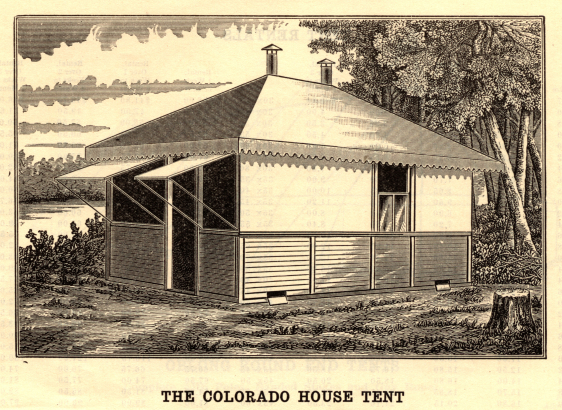
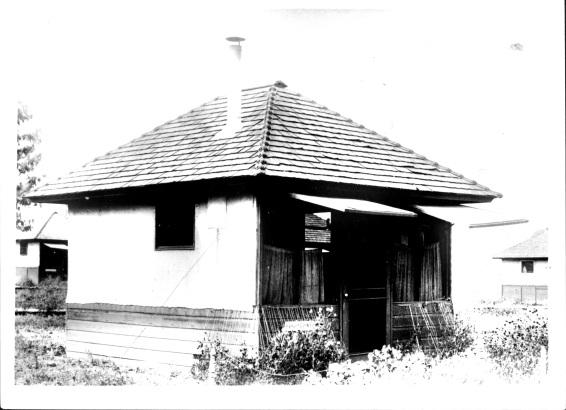
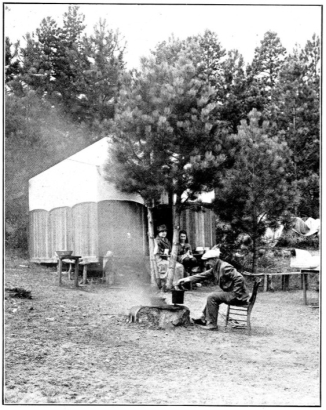
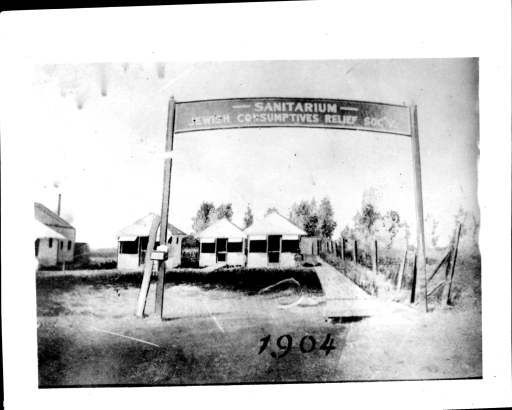

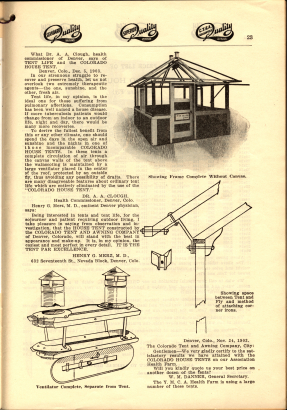
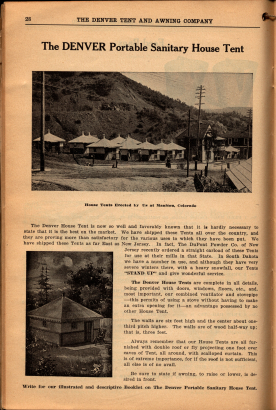
Comments
Thanks for creating this…
Thanks for creating this article. My great grandfather started The Colorado Tent and Awning Company back in 1899.
Thanks for reading the…
Thanks for reading the article, Ted.You are more than welcome to come in and look at the old catalogs. They are fascinating.
Add new comment